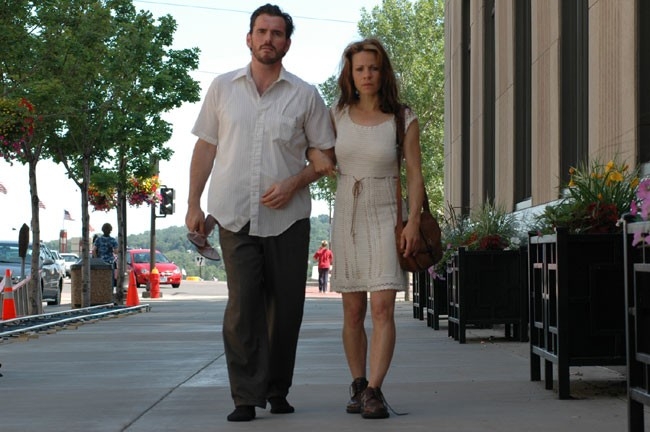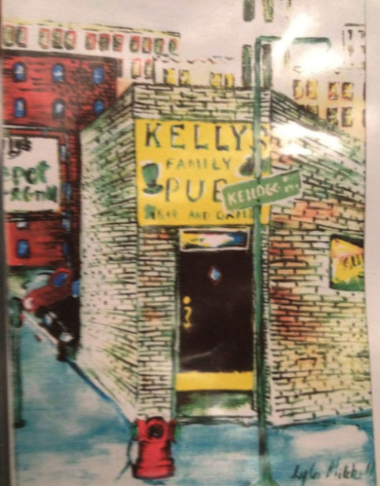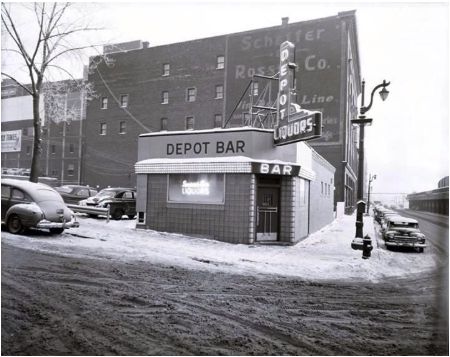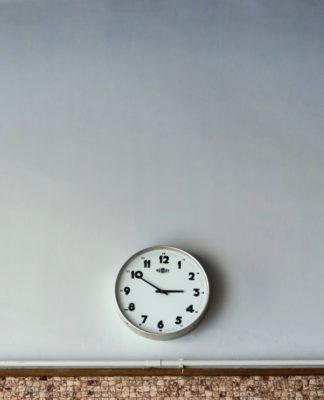We were recently watching the 2005 film adaptation of Bukowski’s famous Factotum, starring Matt Dillon, Marisa Tomei, and Lili Taylor. Much of the film was shot right here in St. Paul, specifically in the downtown and Lowertown sections of the city. In fact, one of the first bars that Matt Dillion’s Hank Chinaski walks into for a drink, when he should instead be working his menial, blue collar job, is Kelly’s Pub at 241 Kellogg Boulevard E.
There are other local landmarks that feature in the film as well: The glowing red “1” of the First National Bank building can be seen blinking through the window during one particularly poetic moment near the end of the film. Chinaski visits the St. Paul Hotel and strolls, with Lili Taylor wearing his oversized shoes on her feet, past downtown’s majestically moderne City Hall.

He also spends time working in the lobby of City Hall, polishing the onyx “Vision of Peace” statue that has impressed St. Paul for decades.
But, for those who have visited, known, and forgotten Kelly’s Depot after one-too-many pitchers of Summit or Jameson bumps, it was especially exciting to see (our) small dive on Kellogg make such a prominent appearance.
Kelly’s and the new Lowertown
The Factotum story itself, with its gritty, often grimy, always-honest look at life, work, and the human condition, seemed an apt fit for a downtown that, at the time, was in very much in decline; decaying from the inside out. Much of Lowertown was fenced off, the windows of warehouses now home to luxury living, smashed in. The bars were not fancy. The streets were empty most nights.
This is not the Lowertown of today. Thirteen years after the premier of Factotum, Lowertown is, for lack of better term, booming.
The artists who once enjoyed cheap rent for living and studio space are leaving with a headache. The once-quiet streets are now filled with the sounds of drinkers drinking craft beer and $12 cocktails. And more beer. Baseball games. There is life in these warehouses now, and not artist life – big, big money life. With new windows and floors and appliances. Wine racks and marble countertops. They’re not cheap. This is no longer a neighborhood that Henry Chinaski would have found familiar.
Considering this trend, we should not have been entirely surprised when it was reported that Kelly’s would be sold to become the latest market rate housing complex. 7 stories, 90 units. Assumedly furnished with wine racks and marble countertops and things.

Kelly’s is simply the latest in a series of neighborhood mainstays to bid farewell as the city continues to grow and change. It was listed for sale earlier this year at $1.6 million. The empty parking lot up the hill was recently converted into luxury living. Construction on the Jax building a block away is nearly complete as well.
But there was something special about Kelly’s – and developer Jim LaValle of TJL Development has promised to honor that family (in what way we do not know) in the the new building. The new, 7-story building facing Union Depot in this now-booming Lowertown neighborhood.
We will miss Kelly’s. We understand the change and we can respect that it was bound to happen – we knew it was coming; it would have been silly to think that that a lot of that size would stay unoccupied for long – but that doesn’t make the loss taste any better, nor does it help us to move on with our day-to-day without pause.
A past, present, and future farewell
Change is not necessarily a bad thing. In an urban landscape like Lowertown, density is a good (necessary, we should say) thing – the large lot occupied only by Kelly’s was, we will readily admit, not a good/efficient use of space. And Lowertown in general, with the changes that came what-feels-like overnight, the new bars and restaurants, the baseball stadium, the rising property values and added luxury living, would, by just about every city in the country’s standards, be called a success story.
In high school, we called Lowertown the “Broken Window District” for a reason. We only went for random raves in the basements of brick buildings, or to find drugs. Or, innocently, Art Crawl.

But these changes come not without a cost. The Jax building’s artist collective was a cost. The displacement of the art and creators who made Lowertown special before the arrival of big money, and the close-knit community around them, is a cost. The nearly $2 million price tag for Kelly’s Depot is a cost. And Kelly’s closing, razed, forever gone, is a cost.
And, success or not, these costs must be considered as a city continues to grow, change, evolve at a rapid rate. As housing becomes increasingly unaffordable. As more apartment buildings are built without any sort of outward facing retail/options incorporated to welcome the rest of the neighborhood. As isolation/loneliness becomes increasingly common and local gathering hubs and watering holes like Kelly’s bite the dust simultaneously.
Kelly’s was a welcoming place. Beer was cheap. A safe space for anyone. There was good music on the juke box. The seats outside were filled with a cast of characters that made Lowertown the unique and special place that it was.
Or maybe it still is.
We’ll soon order our last coney dog or burger, get a Bloody Mary, or a beer and a bump, and play one final round of darts. And then we’ll move on, with all the Henry Chinaski’s and Lowertown residents that remember when things looked just a little bit different. There will be other nights in other bars in St. Paul. We’ll continue to support the places we love for as long as we can, as the world continues to change around us.
We’ll say our farewells to favorites that disappear and welcome new things along the way.
Read this article next: That restaurant you forgot about? It just closed for good

















